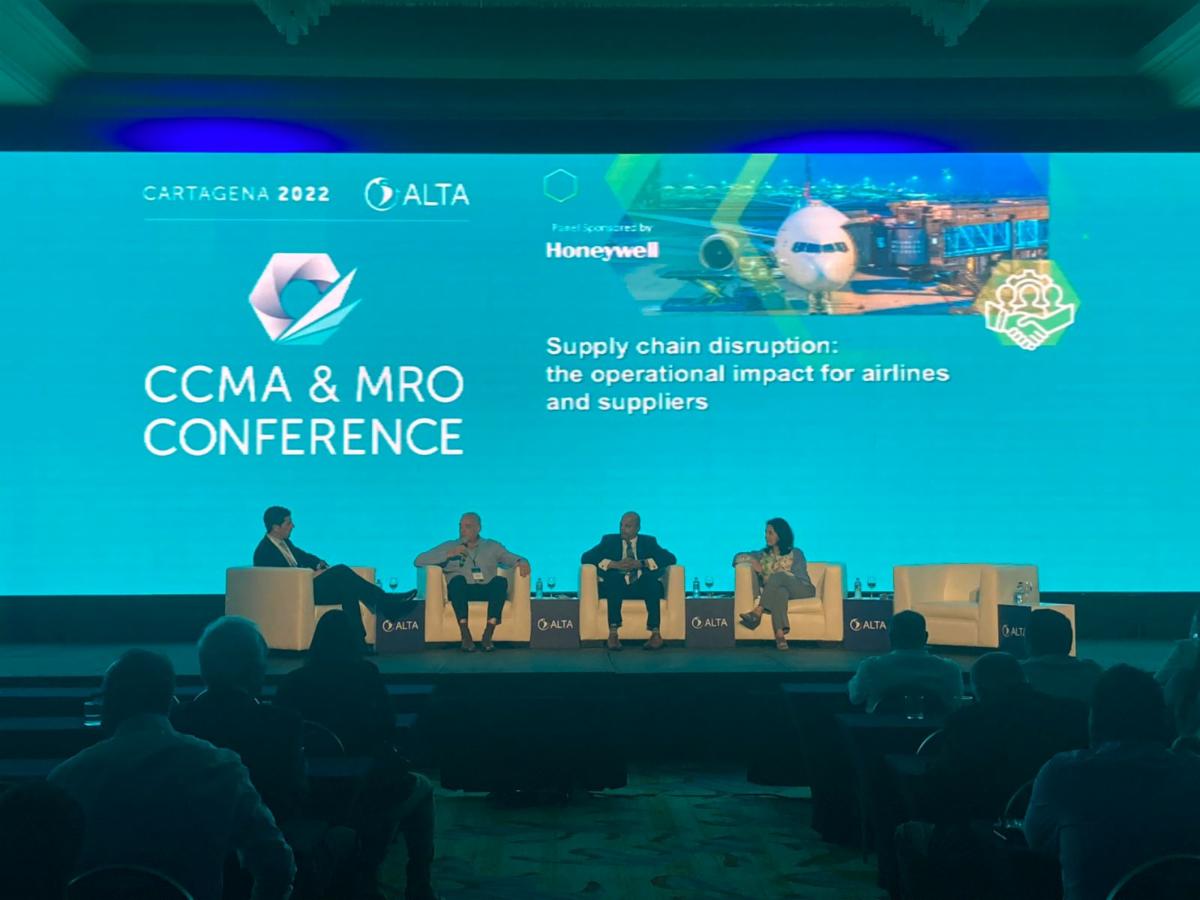Source: ALTA
Disruptions to the global supply chain and maritime transport make it difficult for aircraft manufacturers and company suppliers to meet the growing demand for parts. This context was the theme of the panel “Disruption of the supply chain: operational impact for airlines and suppliers” on the first day of the ALTA CCMA & MRO Conference 2022.
Moderated by Carlos Garcia, director of Oliver Wyman, the panel was attended by Eduardo Gáspari, head of operations of Flybondi, Diana Calixto, senior vice president of administration and supply of Avianca, Jayesh Shanbhag, General Manager for Americas Customer and Product Support at GE and Andy Shields, Vice President of PMA at Wencor.
At the very beginning of the panel, moderator Carlos Garcia presented an overview of the challenges facing the region’s industry in recent years. As an example, Garcia cited the difference between countries in the recovery of the pandemic: “while the top 10 American airlines received more than 15 billion dollars of government support, the Latin American region was the region with the least received support in the world”.
Although it has immense potential, the Latin American region feels effects that impact the market in the region. One of the points pointed out by the moderator was the slow economic growth and the cost of fuel, which is dollarized and brings more complexity to the organization of costs of the air sector in the region. Supplies also put pressure on industry costs. According to Alixpartners data, the aviation industry paid on average 27% to 44% more for raw materials in the first half of 2021, compared to 2020. All of these effects contribute to lower growth in the region compared to other markets.
aircraft manufacturers put pressure on the supply chain, which is a particular challenge for parts suppliers, especially in the supply chain for the production of narrow-fuselage aircraft, who have seen an increase in demand due to the recovery of short-distance travel. From 2019 to 2022, the region’s fleet grows by 1.1%, while other regions of the world grow by 2.6%.
Diana Calixto, VSP from Avianca, explains the vision of a big company facing these challenges: “In Avianca we have a great challenge in terms of fleet because of our business model and what we have of history is not enough now. We studied to recalibrate our model, but now we have to find new solutions to move forward in terms of efficiency and intelligence and our prediction is based on more in-depth and customized studies.”
For Flybondi, a smaller company, to get through these moments the important thing is trust. “At first we renegotiated everything, from supplies to fuel, and some suppliers had a tougher position and others did not. And for us the key to success was this collaboration to overcome the pandemic”.
For GE, which is a consumer of materials and also an important supplier for the sector, keeping distribution intact during the pandemic was essential for the continuity of the industry’s supply. “We seek to ensure that relationships are maintained and long-term contracts with suppliers of all materials are not impacted, maintaining our greater manufacturing and purchasing capacity. What we asked was a forecast for the companies, so that the relationship would continue during this difficult time”.
While suppliers face multiple disadvantages, they agree that finding sufficient skilled labour is the most important obstacle to overcome. According to Oliver Wylman’s industry survey, more than 80% of respondents in the North American region still expect rising prices and labour costs by at least 4% by 2023.

